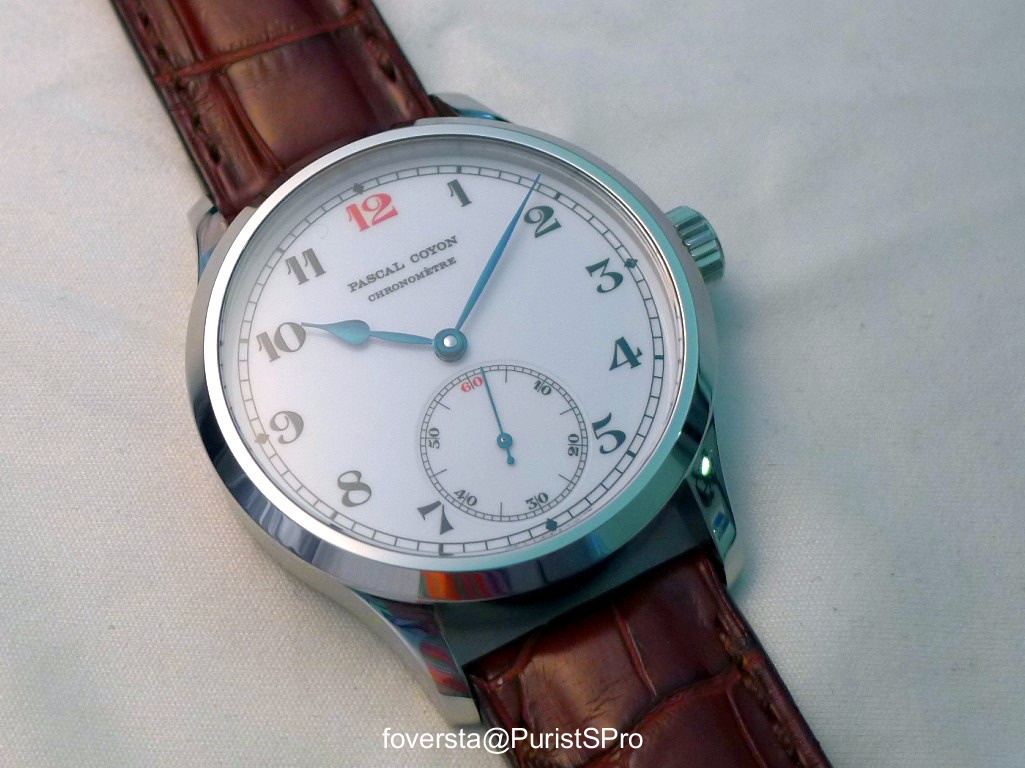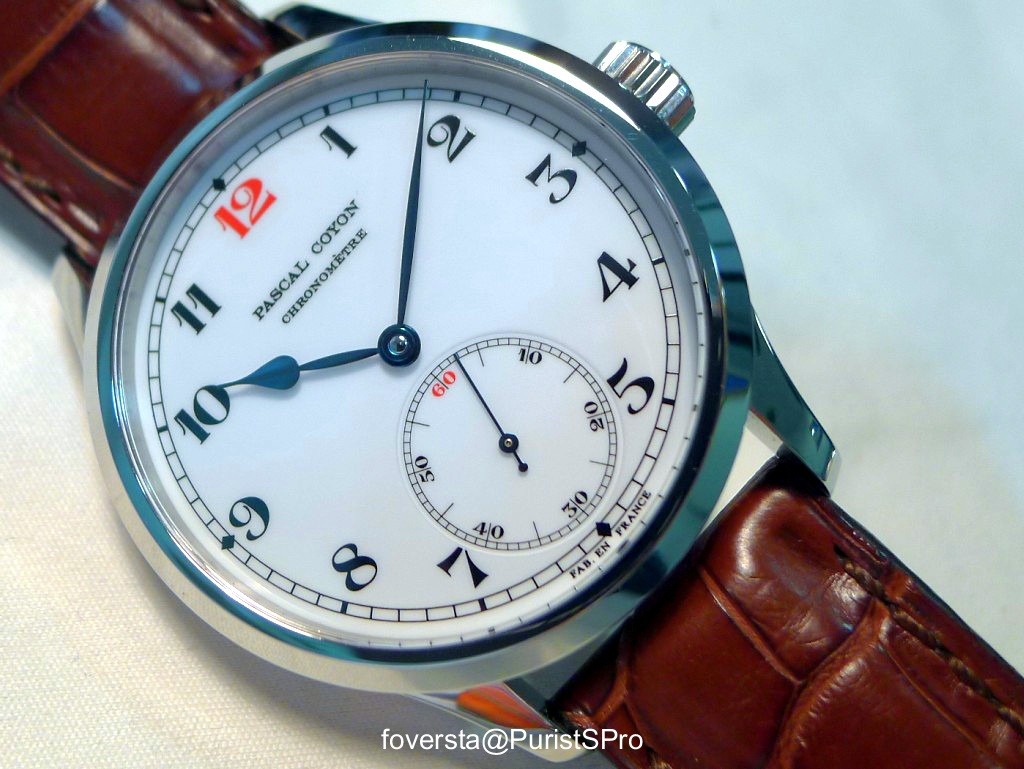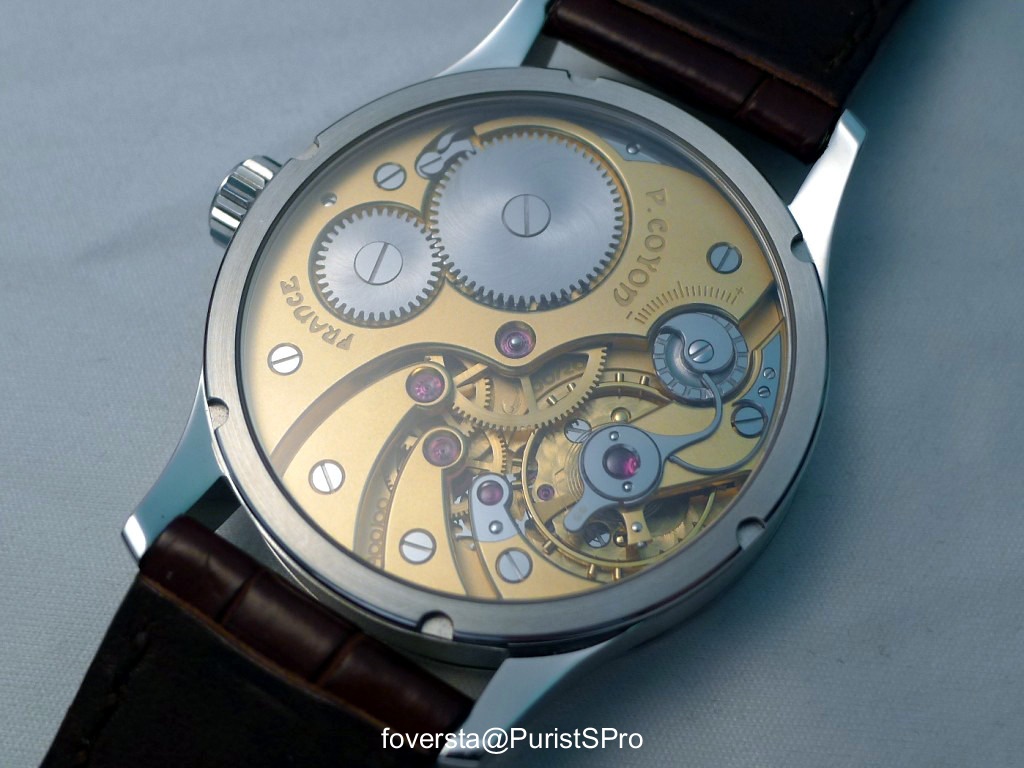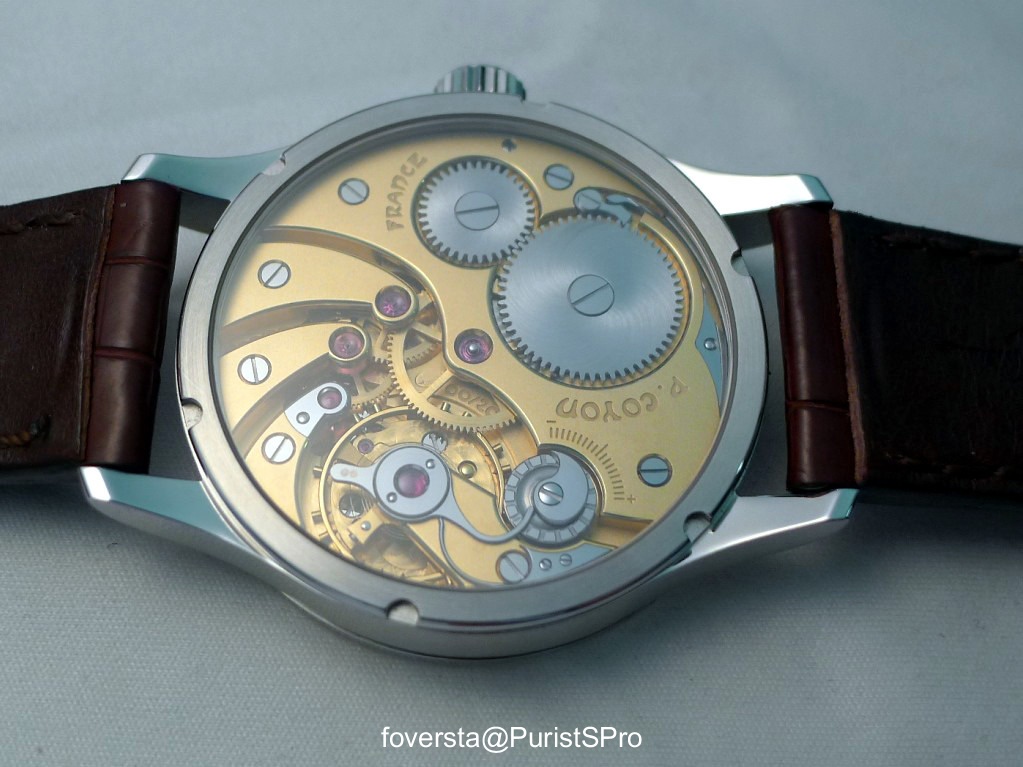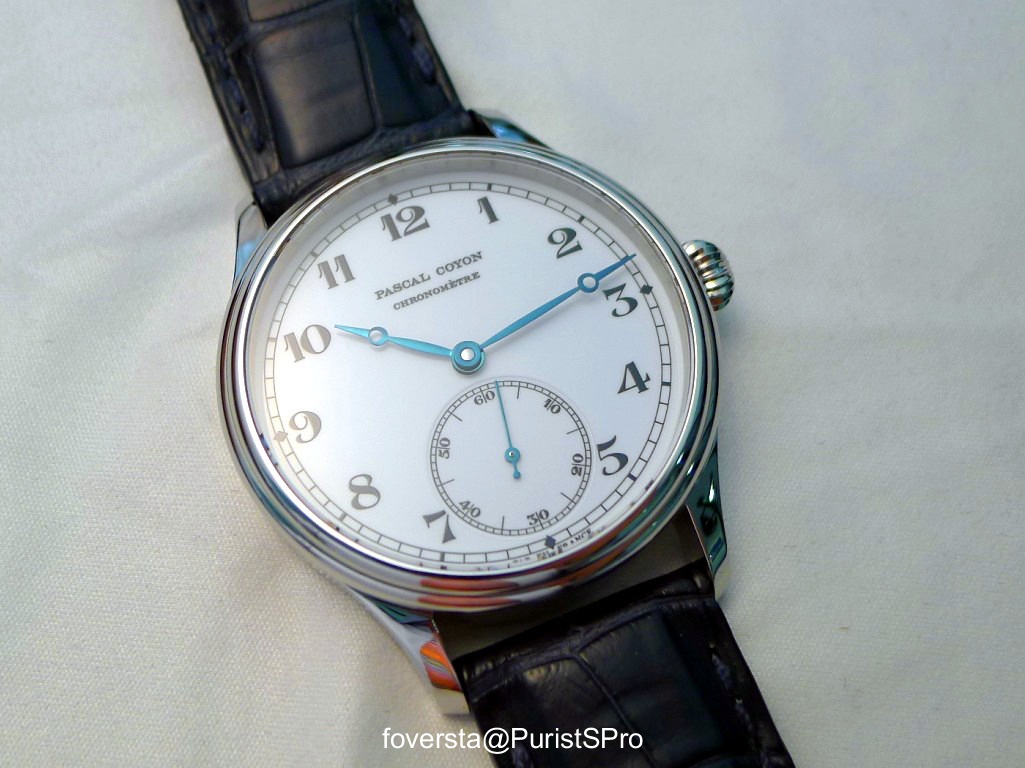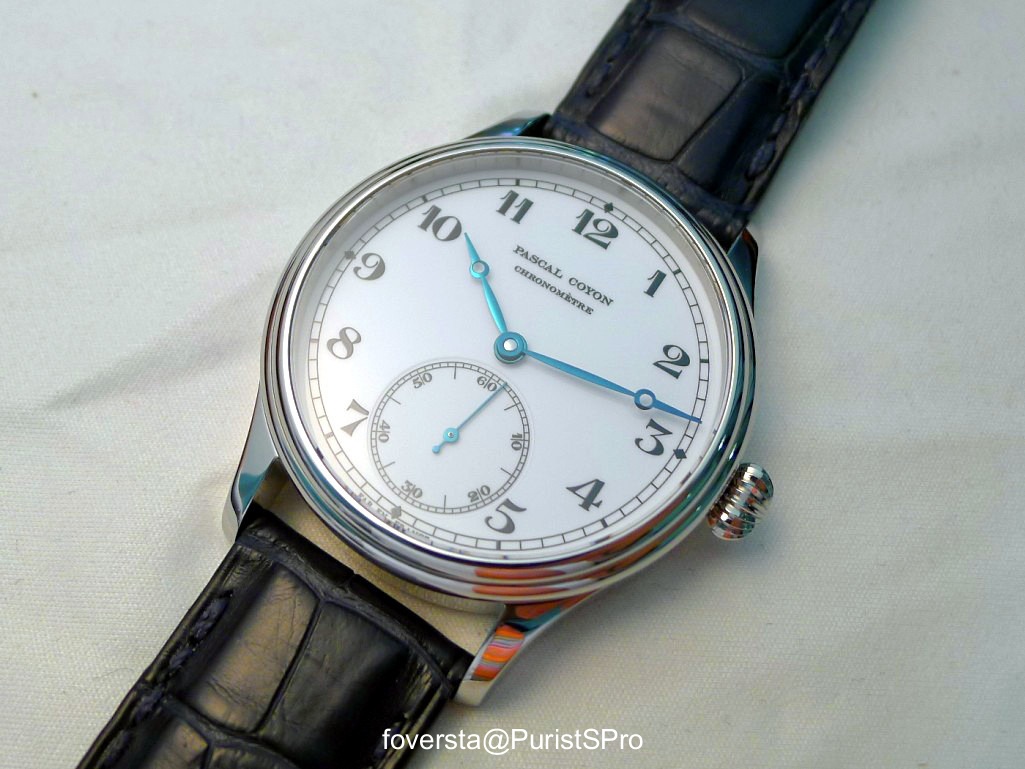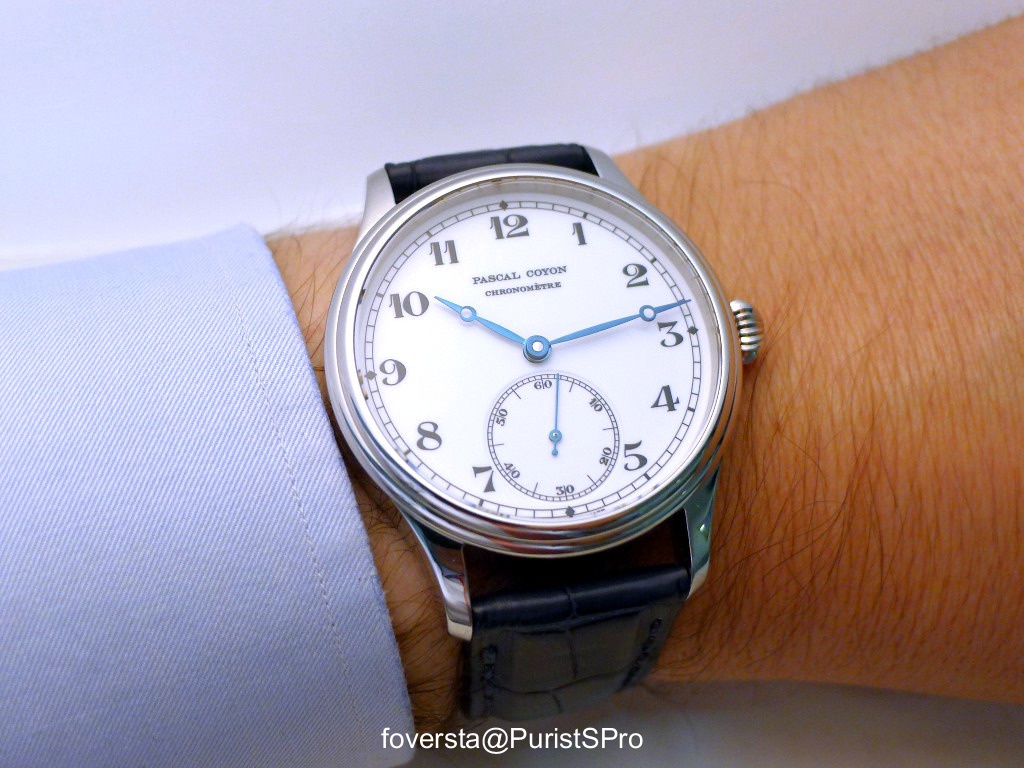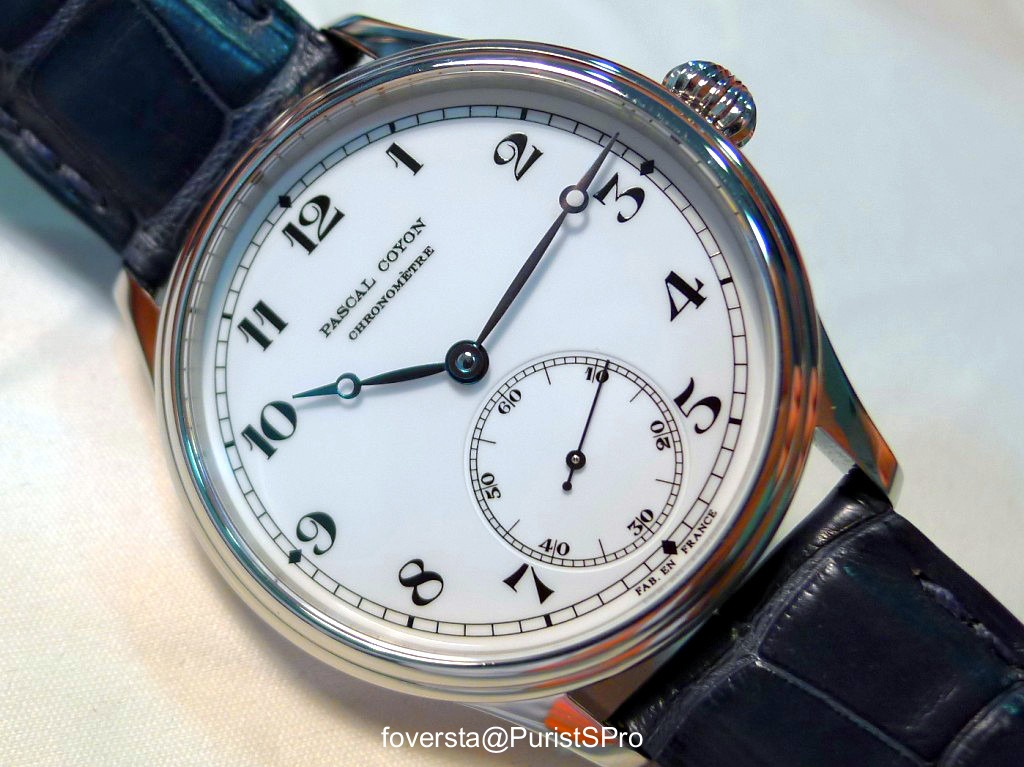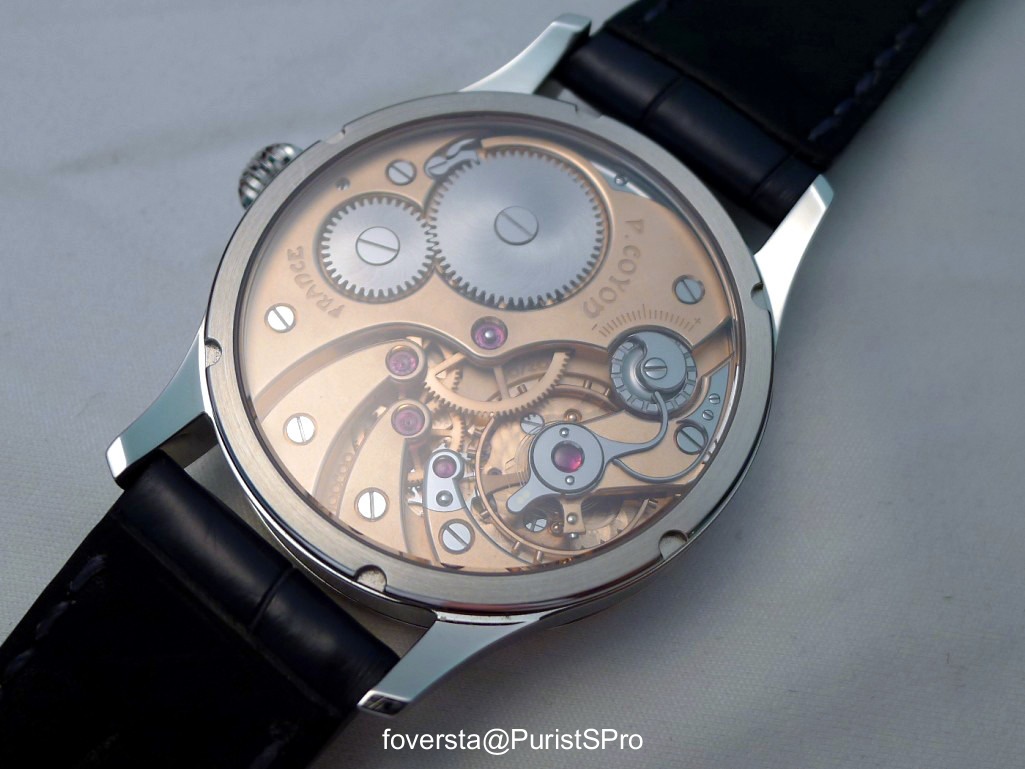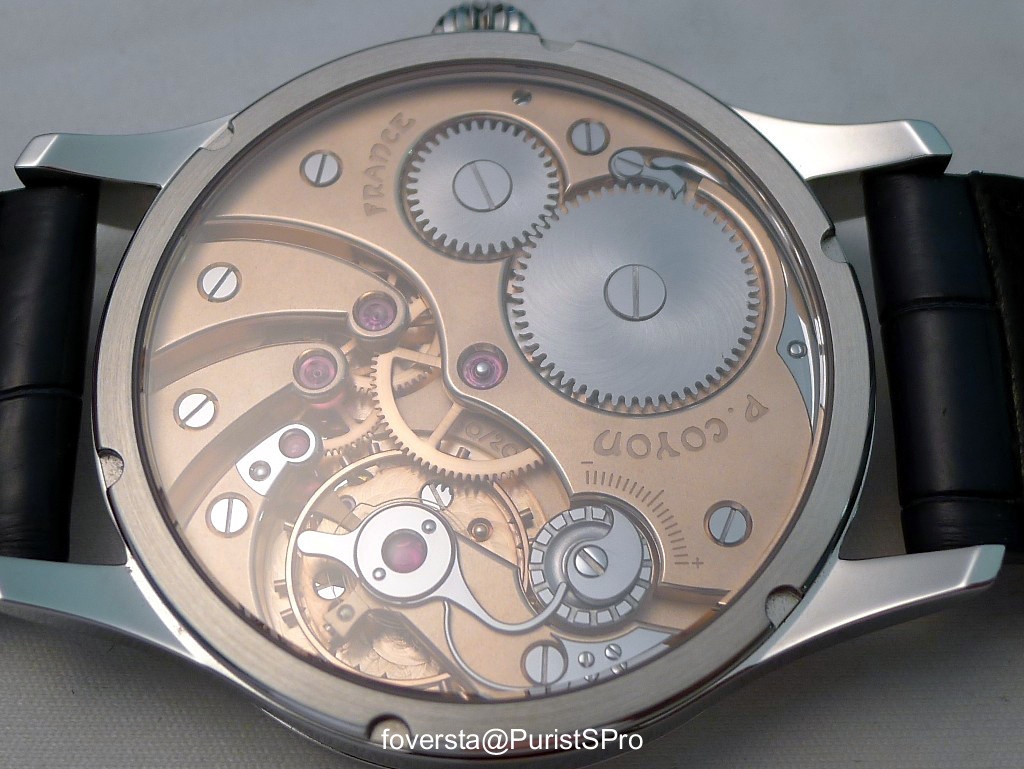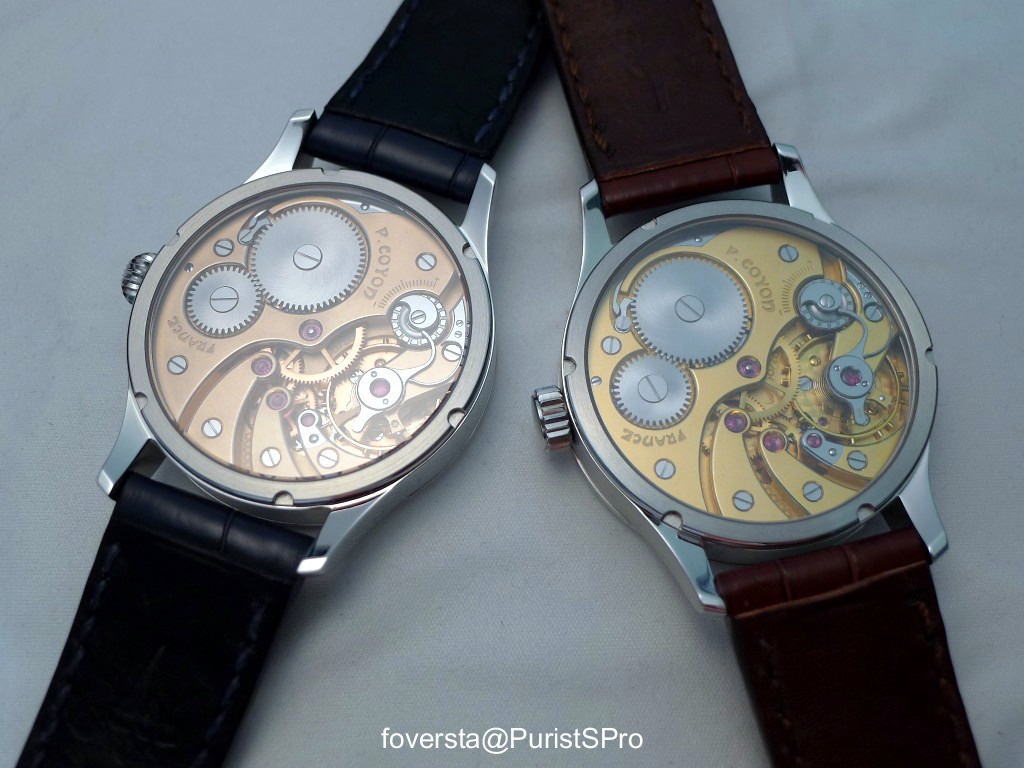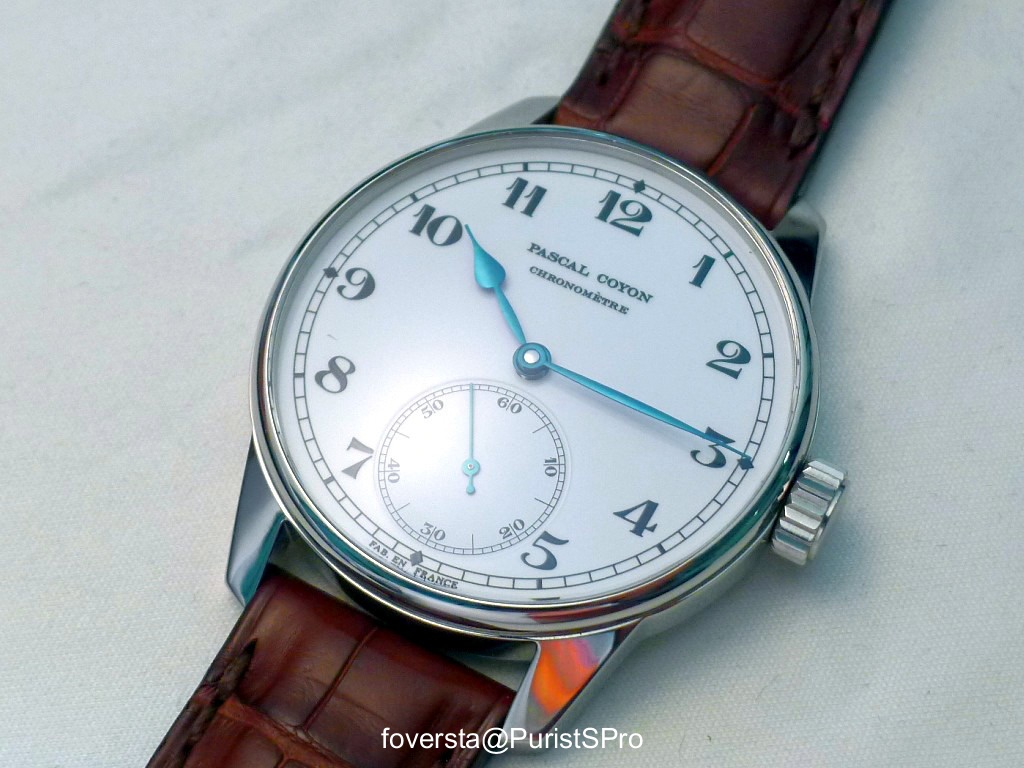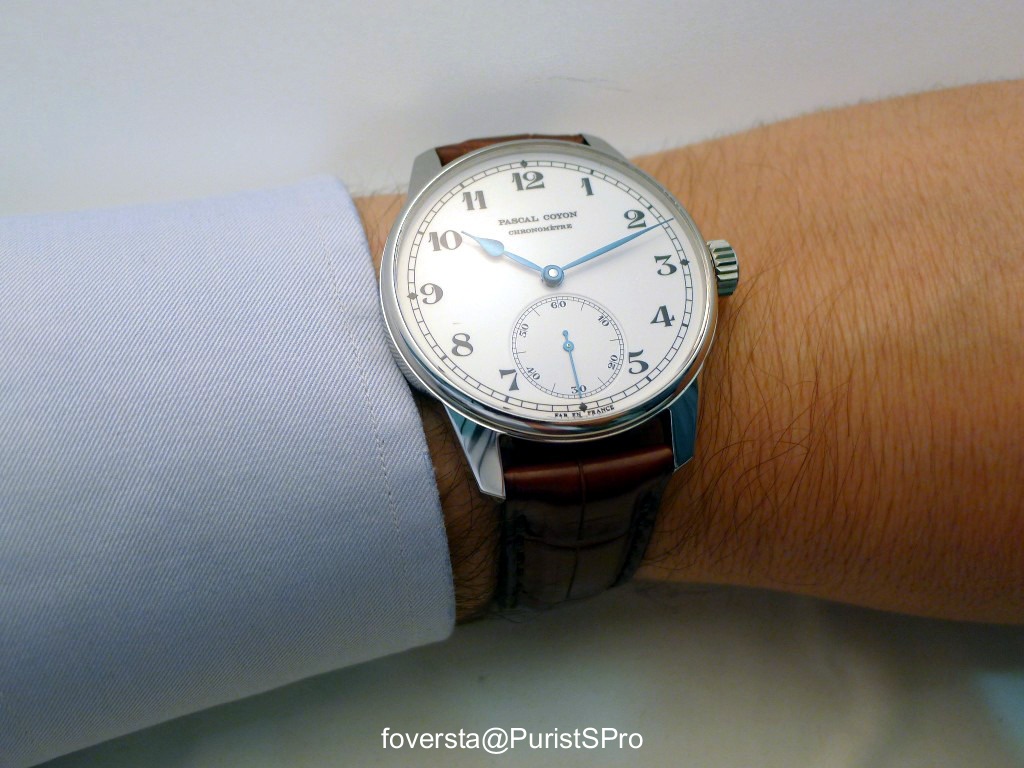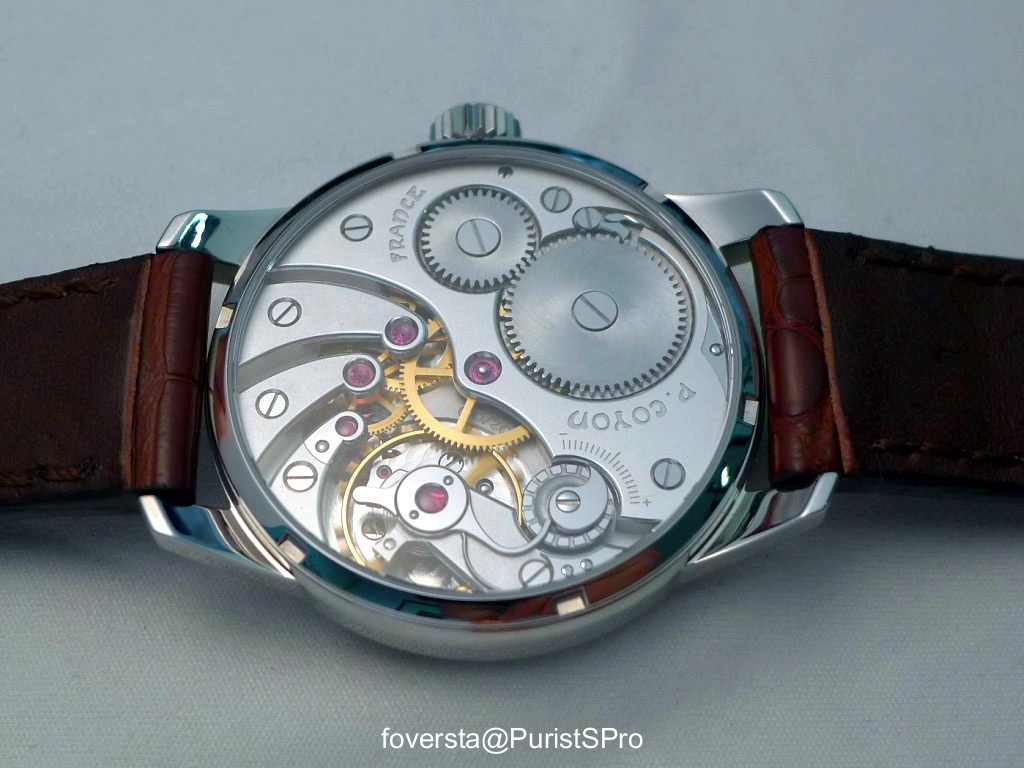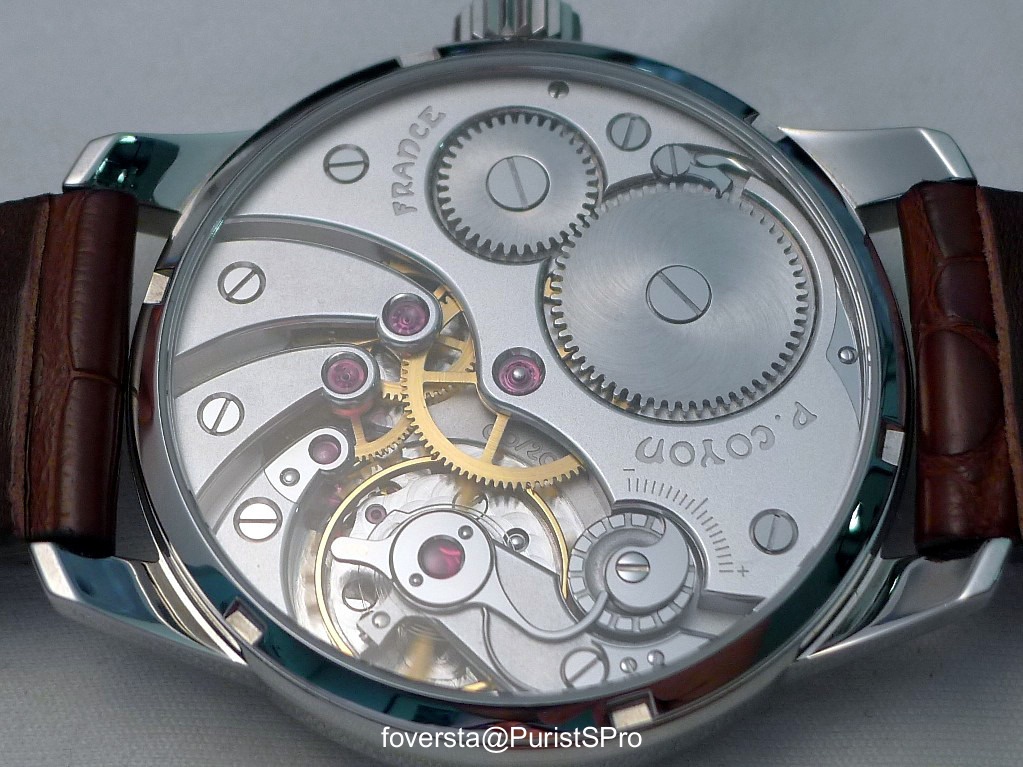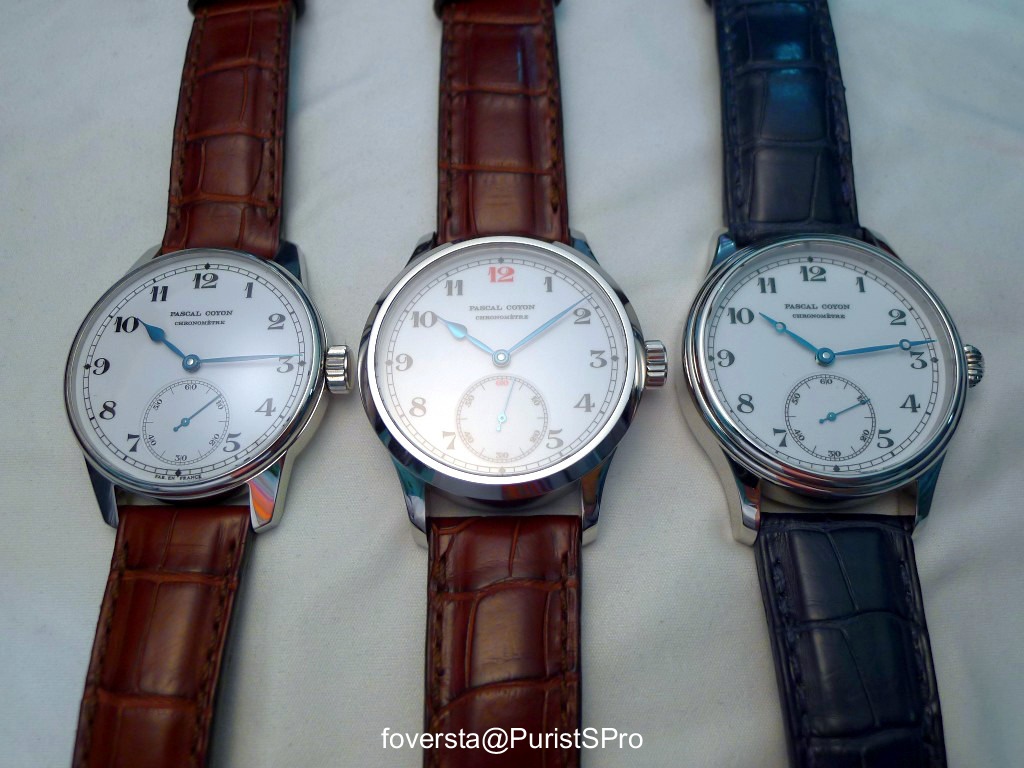1
Share on facebook
Share on email
Share on favorites
Far from the Jura mountains and close to the sunny beaches of the South West of France is located Pascal Coyon's workshop. And I can tell you that this region between Hossegor and Biarritz may become in a few months more than a pure surf spot but a true credible watchmaking center! Actually, I'm very proud to show you the latest prototypes from Pascal Coyon since I always try to support the projects from my country which used to be one of the key horological areas.
Pascal Coyon is a very gifted watchmaker from the Champagne region in the East of France. Attracted by a new life and maybe a better weather, he moved to the South West to open his workshop dedicated at the beginning to watches & clocks restoration or repairings. 3 years ago, the idea to create his own watch came to his mind and so he launched his project with the following principles:
- the watch had to be affordable and not only dedicated to the very wealthy collectors
- it had to be a tribute to the golden age of watchmaking, when a lot of care to details was brought to the movements, the years 1900s (and it is the reason why the movement bears the name 1900)
- it also had to be relialable and easy to be serviced
- and of course, like any good watchmaker, Pascal Coyon was also focused on the chronometric performances of the movement
Red figures - 42mm case with 45° inclined bezel:
For all these reasons, he made the choice to start from an Unitas base but with the objective to achieve a caliber which would look like the Longines 19.70 with grained finishings and flawless beveled bridges... without forgetting the very specific regulating organ based on the use of what we call in French a "virgule" (a comma).
Actually, for this production process, Pascal Coyon takes the Unitas movement, removes the moving parts for further use and then redesign almost everything including of course the bridges (made of brass). The first idea when the concept came to his mind was to apply on the movement a yellow gold coating in order to be very faithful to the 1900s spirit. I love this type of finishings which make me think about some Ballouard's movements and which bring a high contrast between the moving parts and the bridges. Following some remarks and requests from clients, two other finishings are available: pink gold coating (with a copper feel) which make us think about some vintage Omega calibers (but of course they came later than during the years 1900s) and which is the most original one and rhodium plating, at the end the most sober one. Pascal Coyon will produce 20 movements per type of finishings so a grand total of 60 movements.
Yellow gold finishings:
The production rhythm is and will be slow: the first delivery is expected to occur at Fall 2014 but the orders made now (directly to his workshop or through his Facebook page) will be delivered not before end of quarter two 2015. This delay can be explained very easily by the production process: the plate and the bridges are made in-house at the workshop and the parts are also finished at the same place using tools... and some secret techniques! The polished effect is made thanks to diamond powder and oil on a zinc plate. I would like to give you an example of the quality of the finishings: even the beveling and chanfering of the circle around the ratchet wheel are perfectly done... and you have to consider that it is very difficult to reach this quality of execution since you can't go through the plate with the tool because there is no hole! A very difficult gesture which requires a lot of skills and patience! You only have to observe the beauty of the three movements to understand why these watches have something special: they really put the Unitas on a galaxy never reached before if I don't take into account Lang&Heyne, a galaxy in which we only have to appreciate the perfect lay-out of the movement and the sensual shapes of its bridges.
42mm case with gadroon:
The regulating organ is a true eye-catcher... this comma allows to get a micrometric setting while, being less demanding for the mainspring. But if we forget the technical point of view, we can spend hours watching the shape of this comma! Unitas base oblige, the movement has a 2,5hz frequency which is obviously a very good point: I appreciate these slow-mo movements, their large balance wheels which are totally coherent with the spirit of the watch.
Pink Gold finishings:
One of the most interesting points of the project is that the Unitas movement is also modified in its lay-out: the distance between the hands axis is changed since the second hand axis is moved by 1mm to the center of the dial. Why this change? Only to make the dial more balanced. If you observe watches based on an Unitas, you may feel that the second hand subdial is a bit too small and located too close to the bezel (which is a far better feeling that 95% of the watches with their second hand too close to the center!). Anyway, by moving this axis, Pascal Coyon is able to enlarge the subdial and so to make the dial more balanced. Frankly speaking, I highly appreciate this kind of detail.
3 types of finishings:
Speaking about the dial, two versions are currently available: with or without red 12 and 60. Of course, we can find here another tribute to the pocket watches from the past. The dial is not made in-house but the provider did a great job. The dial is made of 6 layers, each one being polished. It is the reason why we can observe a slight effect of volume on the figures.
41mm case:
Their design is very classic, without any surprise: don't expect any originality here, we are in the very well-known territory with the railroad and the index shapes. At least, this conservative approach is once again coherent with what we see when we turn over the watch and Pascal Coyon avoids a design flaw! Two types of blued hands can be used: Marine hands, my fav ones and Breguet hands (aiguilles pomme as we say in French).
At this stage, the weakest element of the watch comes from the stainless-steel case. 3 different cases are available (with brushed or polished finishings), two with a 42mm diameter (with or without gadroon) and one with a 41mm diameter. I found the two 42mm ones a bit too generic and obviously this feeling is due to the fact that I saw them elsewhere before. The 41mm is more interesting with a slender style and I found it more elegant. 41mm is the minimum size available due to the own diameter of the movement. There is another difference to be highlighted: the glass of the 41mm case has a slightly domed shape (which made the pictures more tricky to take!). Whatever is the case, it is easy to handle the crown. As you can see it on the pictures, one of the watches feature an onion-shaped crown, I think that this option will be available but I'm not sure since Pascal Coyon prefers the classic crown here (so do I).
Rhodiumed finishings:
Putting any of these watches on the wrist is pure pleasure if your heart appreciates classic watchmaking and design. The Chronometer from Pascal Coyon is a watch without any true surprise when worn but with a timeless design. In a sense, their true beauty is hidden and when you observe the movement you have the feeling to be back to the roots of watchmaking when the quest for chronometry was the key objective: the finishings didn't have a decorative purpose, they were applied to improve the performance of the movement. With Pascal Coyon's watches, I have the same feeling. Actually, the watches will be delivered with a chronometric bulletin from the Besançon Observatoire. It will be also stated on the movement with the presence of the viper head seal between the balance wheel bridge and the barrel bridge. This seal is of course not visible on the prototypes. Since we are talking here about the Observatoire de Besançon and its bulletins, it will be the full watch (and not only the movement) which will be tested during several days.
3 watches together:
As you understood it, I am under the charm of these watches which symbolize for me a very valuable watchmaking approach: a tribute to classic watchmaking, a great care to details... with an affordable price. Because here is, at least for me, the biggest surprise of this French offer: the price of each watch, whatever are the case shape, the movement finishings is around 4.950 euros French VAT included. I have to confess that I couldn't resist and I ordered one. I'm sure about the case: I will take the 41 one because it is the most elegant and its size is enough for me. I'm also sure about the hands: the Marine ones. But I'm still thinking about the presence or not of red figures and what would be the movement colour... decision, decision! Anyway, I know that with any option I will choose I will be happy with the watch. I would like to congratulate Pascal Coyon for this impressive achievement.
Far from the Jura mountains and close to the sunny beaches of the South West of France is located Pascal Coyon
's workshop. And I can tell you that this region between Hossegor and Biarritz may become in a few months more than a pure surf spot but a true credible watchmaking center! Actually, I'm very proud to show you the latest prototypes from Pascal Coyon since I always try to support the projects from my country which used to be one of the key horological areas.
Pascal Coyon is a very gifted watchmaker from the Champagne region in the East of France. Attracted by a new life and maybe a better weather, he moved to the South West to open his workshop dedicated at the beginning to watches & clocks restoration or repairings. 3 years ago, the idea to create his own watch came to his mind and so he launched his project with the following principles:
- the watch had to be affordable
and not only dedicated to the very wealthy collectors
- it had to be a tribute to the golden age of watchmaking
, when a lot of care to details was brought to the movements, the years 1900s (and it is the reason why the movement bears the name 1900)
- it also had to be relialable
and easy to be serviced
- and of course, like any good watchmaker, Pascal Coyon was also focused on the chronometric performances
of the movement
Red figures - 42mm case with 45° inclined bezel:
For all these reasons, he made the choice to start from an Unitas base but with the objective to achieve a caliber which would look like the Longines 19.70 with grained finishings and flawless beveled bridges... without forgetting the very specific regulating organ based on the use of what we call in French a "virgule" (a comma).
Actually, for this production process, Pascal Coyon takes the Unitas movement, removes the moving parts for further use and then redesign almost everything including of course the bridges (made of brass). The first idea when the concept came to his mind was to apply on the movement a yellow gold coating in order to be very faithful to the 1900s spirit. I love this type of finishings which make me think about some Ballouard's movements and which bring a high contrast between the moving parts and the bridges. Following some remarks and requests from clients, two other finishings are available: pink gold coating (with a copper feel) which make us think about some vintage Omega calibers (but of course they came later than during the years 1900s) and which is the most original one and rhodium plating, at the end the most sober one. Pascal Coyon will produce 20 movements per type of finishings so a grand total of 60 movements.
Yellow gold finishings:
The production rhythm is and will be slow: the first delivery is expected to occur at Fall 2014 but the orders made now (directly to his workshop or through his Facebook page) will be delivered not before end of quarter two 2015. This delay can be explained very easily by the production process: the plate and the bridges are made in-house at the workshop and the parts are also finished at the same place using tools... and some secret techniques! The polished effect is made thanks to diamond powder and oil on a zinc plate. I would like to give you an example of the quality of the finishings: even the beveling and chanfering of the circle around the ratchet wheel are perfectly done... and you have to consider that it is very difficult to reach this quality of execution since you can't go through the plate with the tool because there is no hole! A very difficult gesture which requires a lot of skills and patience! You only have to observe the beauty of the three movements to understand why these watches have something special: they really put the Unitas on a galaxy never reached before if I don't take into account Lang&Heyne, a galaxy in which we only have to appreciate the perfect lay-out of the movement and the sensual shapes of its bridges.
42mm case with gadroon:
The regulating organ is a true eye-catcher... this comma allows to get a micrometric setting while, being less demanding for the mainspring. But if we forget the technical point of view, we can spend hours watching the shape of this comma! Unitas base oblige, the movement has a 2,5hz frequency which is obviously a very good point: I appreciate these slow-mo movements, their large balance wheels which are totally coherent with the spirit of the watch.
Pink Gold finishings:
One of the most interesting points of the project is that the Unitas movement is also modified in its lay-out: the distance between the hands axis is changed since the second hand axis is moved by 1mm to the center of the dial. Why this change? Only to make the dial more balanced. If you observe watches based on an Unitas, you may feel that the second hand subdial is a bit too small and located too close to the bezel (which is a far better feeling that 95% of the watches with their second hand too close to the center!). Anyway, by moving this axis, Pascal Coyon is able to enlarge the subdial and so to make the dial more balanced. Frankly speaking, I highly appreciate this kind of detail.
3 types of finishings:
Speaking about the dial, two versions are currently available: with or without red 12 and 60. Of course, we can find here another tribute to the pocket watches from the past. The dial is not made in-house but the provider did a great job. The dial is made of 6 layers, each one being polished. It is the reason why we can observe a slight effect of volume on the figures.
41mm case:
Their design is very classic, without any surprise: don't expect any originality here, we are in the very well-known territory with the railroad and the index shapes. At least, this conservative approach is once again coherent with what we see when we turn over the watch and Pascal Coyon avoids a design flaw! Two types of blued hands can be used: Marine hands, my fav ones and Breguet hands (aiguilles pomme as we say in French).
At this stage, the weakest element of the watch comes from the stainless-steel case. 3 different cases are available (with brushed or polished finishings), two with a 42mm diameter (with or without gadroon) and one with a 41mm diameter. I found the two 42mm ones a bit too generic and obviously this feeling is due to the fact that I saw them elsewhere before. The 41mm is more interesting with a slender style and I found it more elegant. 41mm is the minimum size available due to the own diameter of the movement. There is another difference to be highlighted: the glass of the 41mm case has a slightly domed shape (which made the pictures more tricky to take!). Whatever is the case, it is easy to handle the crown. As you can see it on the pictures, one of the watches feature an onion-shaped crown, I think that this option will be available but I'm not sure since Pascal Coyon prefers the classic crown here (so do I).
Rhodiumed finishings:
Putting any of these watches on the wrist is pure pleasure if your heart appreciates classic watchmaking and design. The Chronometer from Pascal Coyon is a watch without any true surprise when worn but with a timeless design. In a sense, their true beauty is hidden and when you observe the movement you have the feeling to be back to the roots of watchmaking when the quest for chronometry was the key objective: the finishings didn't have a decorative purpose, they were applied to improve the performance of the movement. With Pascal Coyon's watches, I have the same feeling. Actually, the watches will be delivered with a chronometric bulletin from the Besançon Observatoire. It will be also stated on the movement with the presence of the viper head seal between the balance wheel bridge and the barrel bridge. This seal is of course not visible on the prototypes. Since we are talking here about the Observatoire de Besançon and its bulletins, it will be the full watch (and not only the movement) which will be tested during several days.
3 watches together:
As you understood it, I am under the charm of these watches which symbolize for me a very valuable watchmaking approach: a tribute to classic watchmaking, a great care to details... with an affordable price. Because here is, at least for me, the biggest surprise of this French offer: the price of each watch, whatever are the case shape, the movement finishings is around 4.950 euros French VAT included. I have to confess that I couldn't resist and I ordered one. I'm sure about the case: I will take the 41 one because it is the most elegant and its size is enough for me. I'm also sure about the hands: the Marine ones. But I'm still thinking about the presence or not of red figures and what would be the movement colour... decision, decision! Anyway, I know that with any option I will choose I will be happy with the watch. I would like to congratulate Pascal Coyon for this impressive achievement.
老表迷pp 发表于 2014-7-21 21:43
[/url]1
Share on facebook Share on email Share on favorites
老表迷pp 发表于 2014-7-21 21:43
[/url]1
Share on facebook Share on email Share on favorites
- 回复 9楼
-

- weiandi119726
- 2014-07-22 14:05
不知到是手动几日链的,
手动表没有动显比较可惜啊
weiandi119726 发表于 2014-7-22 14:05
不知到是手动几日链的,
手动表没有动显比较可惜啊
- 回复 11楼
-

- weiandi119726
- 2014-07-22 14:27
爱表的上海人 发表于 2014-7-22 14:20
这个问题很关键
weiandi119726 发表于 2014-7-22 14:27
表叔,继波尔,之后,我又入了块宝珀手动,发现有动显,真的很方便啊
weiandi119726 发表于 2014-7-22 14:27
表叔,继波尔,之后,我又入了块宝珀手动,发现有动显,真的很方便啊
- 回复 14楼
-

- weiandi119726
- 2014-07-22 14:39
爱表的上海人 发表于 2014-7-22 14:37
宝柏价位多少?
weiandi119726 发表于 2014-7-22 14:39
入门款6606,公价75000,到手41000,去年底入的,作业到现在还没做呢,正好,交在这里 ...
weiandi119726 发表于 2014-7-22 14:39
入门款6606,公价75000,到手41000,去年底入的,作业到现在还没做呢,正好,交在这里 ...
- 回复 17楼
-

- weiandi119726
- 2014-07-22 14:54
爱表的上海人 发表于 2014-7-22 14:52
我就是喜欢入门款
weiandi119726 发表于 2014-7-22 14:54
而且宝珀入门款相当厚道,一点也不入门,100小时储能,K金刻度,K金摆陀,实属难能可贵 ...
- 回复 19楼
-

- weiandi119726
- 2014-07-22 16:34
weiandi119726 发表于 2014-7-22 16:34
是对得起吧?嘿嘿
当时在6651和6606间徘徊,都是伯仲之间


